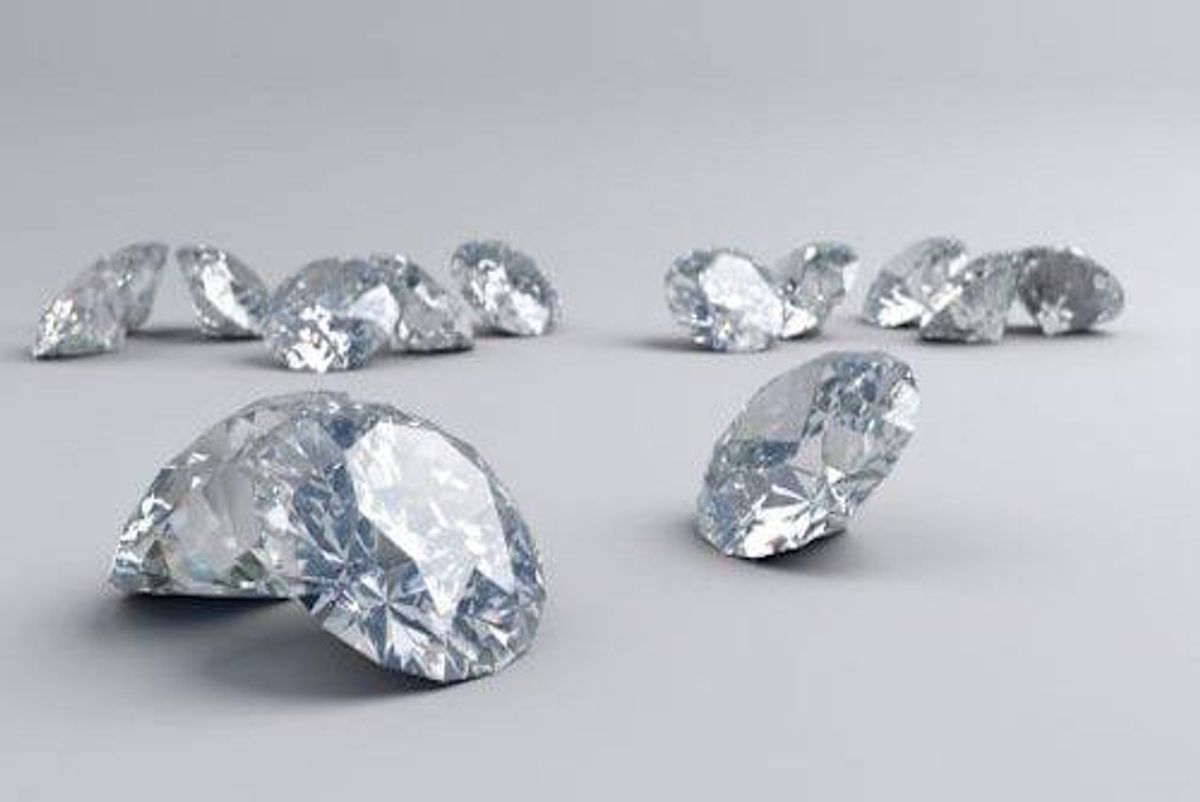What Investors Need to Know About Diamond Investing
Are you considering diamond investing? Read our brief guide of what investors should know about the diamond space first.

Buying diamond jewelry is a common practice, but buying diamonds and trying to turn a profit isn’t an endeavor most investors undertake.
That’s largely because diamond investing is a little bit tricky, especially for those used to investing in precious or base metals, whose prices move more predictably. Unlike precious metals like gold and silver, diamonds are valued subjectively; there is no simple cost-per-ounce valuation system for them, so investors can be left wondering whether different appraisers will assign their diamond the same value.
Colored diamonds, which are rising in popularity, only complicate that issue.
Connected to valuation is the problem of selling a diamond. Most diamonds are sold through retailers at very high profit margins — in other words, an investor looking to profit from selling a diamond necklace or other jewelry would likely suffer an enormous loss.
Those issues dissuade many investors from getting involved in the diamond space, but they are by no means unsolvable. With that in mind, we’ve put together a brief guide on what investors should know before they buy and sell diamonds and how to get involved in the diamond industry.
This article continues below the Diamond Investing Table of Contents.
Diamond Investing Table of Contents
The article listed below provides an overview of investing in diamonds from Diamond Investing News.
Diamond Outlook
- Diamond Outlook 2019: Technology Driving Sector Change
- What to Look for in a Diamond Junior
- 5 Top Diamond News Stories of 2018
Diamond investing: Supply and demand
Diamonds were discovered in India at least 2,400 years ago, and India was the first commercial producer of diamonds. Today, about 90 percent of global rough diamonds are cut and polished in the country, with the sector employing around 800,000 people in highly skilled jobs.
But the story of the modern diamond market really begins in Africa. In 1871, the De Beers mine and the Kimberley mine were discovered in South Africa. The latter was the world’s richest mine for nearly a century, and today De Beers, now owned by Anglo American (LSE:AAL,OTCQX:AAUKF), is the the world’s largest diamond producer.
Other current top diamond-producing mining companies include Alrosa (MCX:ALRS), Dominion Diamond, Lucara Diamond (TSX:LUC,OTC Pink:LUCRF) and Rio Tinto (LSE:RIO,ASX:RIO,NYSE:RIO).
According to independent analyst Paul Zimnisky, longer-term, global rough diamond supply is estimated to incrementally fall annually through at least 2021.
“That said, the industry is arguably approaching the final innings of a shift to a more efficient pipeline after a multiyear deleveraging of supply,” he said in a report. “The strongest players are set to survive setting the stage for a leaner industry set on sounder footing that it has in years — perhaps the diamond industry’s version of the US financial sector post-Lehman Brothers and Bear Stearns in 2008-2009.”
In terms of demand, even though the US produces almost no diamonds for commercial consumption, it buys more than 40 percent of the world’s gem-quality diamonds. That makes it the world’s largest diamond market. The diamond market has been facing some volatility, but according to Zimnisky, the current challenges are seemingly more deeply seated in oversupply than a lack of end-consumer demand.
Diamond investing: How to get started
Generally, market participants fall into the trap of thinking that every diamond can be considered an investment; however, as industry experts have pointed out, that’s simply not true.
So what types of diamonds are considered investment quality? Interestingly, most white diamonds do not fall into that category. That’s because about 98 percent of all diamonds are of the white variety, meaning they are not that rare. Essentially, while some can be a valuable investment, to do so they must be amongst the largest and highest quality.
Many involved in the diamond space are instead looking for opportunities in the fancy colored diamond space. Only around 2 percent of all diamonds are colored, meaning that they are very rare.
Colored diamonds come in a myriad of colors, with red and blue being among the rarest and most pricy. Yellow diamonds fall on the more affordable end of the spectrum, and brown diamonds are cheaper still. For investors looking for an entry point to the diamond market, they may be an option to consider. Click here to read our step-by-step guide to choosing the perfect fancy colored diamond.
All that said, buying physical diamonds is by no means the only way to gain a foothold in the diamond market. Investing in diamond stocks is also a possibility, though doing so requires some careful thinking. That’s because diamond exploration is costly compared to exploration for other resources, and it can be difficult for companies to get funding.
The large diamond producers above may be good entry points for new diamond investors looking for an investment opportunity, though smaller diamond exploration companies do, of course, exist.
Don’t forget to follow us @INN_Resource for real-time news updates.
Securities Disclosure: I, Priscila Barrera, hold no direct investment interest in any company mentioned in this article.
